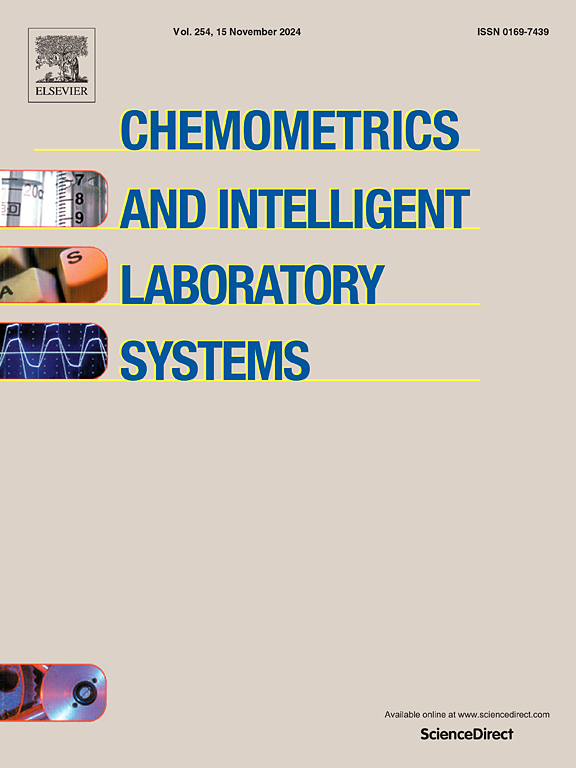用于振动光谱分析的自动峰群分析仪
IF 3.7
2区 化学
Q2 AUTOMATION & CONTROL SYSTEMS
Chemometrics and Intelligent Laboratory Systems
Pub Date : 2024-09-23
DOI:10.1016/j.chemolab.2024.105234
引用次数: 0
摘要
峰群分析(PGA)是一种多变量曲线解析技术,试图从混合物光谱数据的时间序列中提取单一的纯组分光谱。它要求混合物光谱由相对尖锐的峰组成,这在红外和拉曼光谱中很典型。本研究提出了一种自动 PGA(autoPGA),它首先对时间序列光谱进行上游峰值检测,将不同的基于窗口的峰值检测技术与平衡峰值接受标准和峰值分组相结合,以处理重复检测。下一步是以单光谱为导向的 PGA 分析。然后进行下游相关分析,以识别多次出现的纯成分光谱。AutoPGA 可对测量数据矩阵进行完整的纯成分因式分解。该算法适用于各种羰基铑络合物和铱络合物平衡的傅立叶变换红外数据集。本文章由计算机程序翻译,如有差异,请以英文原文为准。
An automated Peak Group Analysis for vibrational spectra analysis
Peak Group Analysis (PGA) is a multivariate curve resolution technique that attempts to extract single pure component spectra from time series of spectral mixture data. It requires that the mixture spectra consist of relatively sharp peaks, as is typical in IR and Raman spectroscopy. PGA aims to construct from individual peaks the associated pure component spectra in the form of nonnegative linear combinations of the right singular vectors of the spectral data matrix.
This work presents an automated PGA (autoPGA) that starts with upstream peak detection applied to time series of spectra, combining different window-based peak detection techniques with balanced peak acceptance criteria and peak grouping to deal with repeated detections. The next step is a single-spectrum-oriented PGA analysis. This is followed by a downstream correlation analysis to identify pure component spectra that occur multiple times. AutoPGA provides a complete pure component factorization of the matrix of measured data. The algorithm is applied to FT-IR data sets on various rhodium carbonyl complexes and from an equilibrium of iridium complexes.
求助全文
通过发布文献求助,成功后即可免费获取论文全文。
去求助
来源期刊
CiteScore
7.50
自引率
7.70%
发文量
169
审稿时长
3.4 months
期刊介绍:
Chemometrics and Intelligent Laboratory Systems publishes original research papers, short communications, reviews, tutorials and Original Software Publications reporting on development of novel statistical, mathematical, or computer techniques in Chemistry and related disciplines.
Chemometrics is the chemical discipline that uses mathematical and statistical methods to design or select optimal procedures and experiments, and to provide maximum chemical information by analysing chemical data.
The journal deals with the following topics:
1) Development of new statistical, mathematical and chemometrical methods for Chemistry and related fields (Environmental Chemistry, Biochemistry, Toxicology, System Biology, -Omics, etc.)
2) Novel applications of chemometrics to all branches of Chemistry and related fields (typical domains of interest are: process data analysis, experimental design, data mining, signal processing, supervised modelling, decision making, robust statistics, mixture analysis, multivariate calibration etc.) Routine applications of established chemometrical techniques will not be considered.
3) Development of new software that provides novel tools or truly advances the use of chemometrical methods.
4) Well characterized data sets to test performance for the new methods and software.
The journal complies with International Committee of Medical Journal Editors'' Uniform requirements for manuscripts.

 求助内容:
求助内容: 应助结果提醒方式:
应助结果提醒方式:


